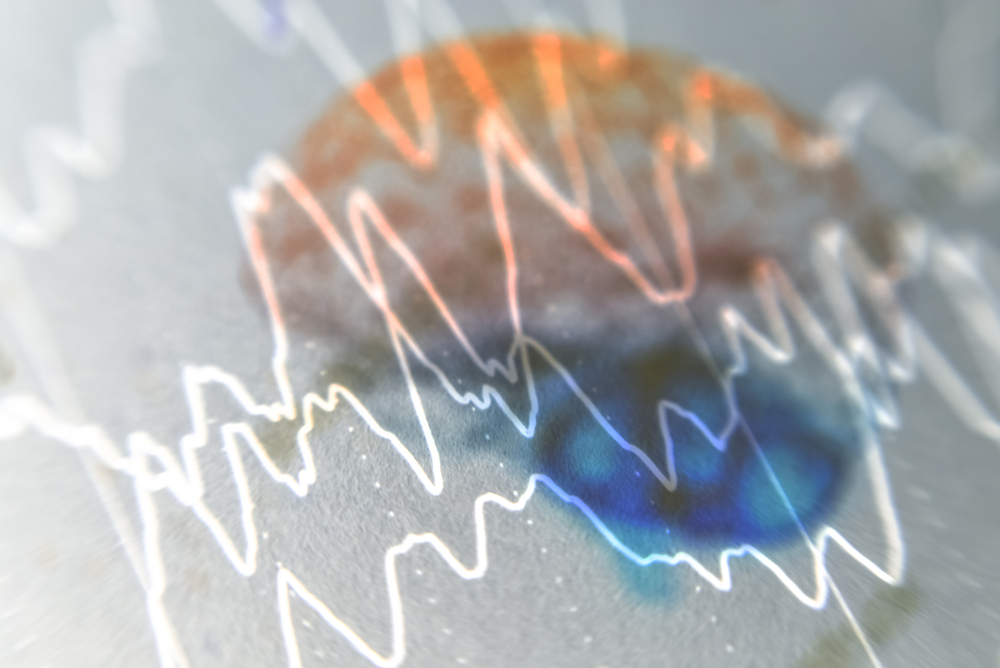Consider the following scenarios: In the first, you’re about to jump out of a plane to skydive; the second, you’re drowsy and relaxing in bed after a long, exhausting day. As you might imagine, the electrical patterns in your brain would look wildly different between the two. Our behavior, emotions, and thoughts are communicated as electrical pulses between neurons within our brains.

At a fundamental level, these pulses — known as brainwaves — can be thought of as conversations between neurons; the electrical gossip amongst our brain cells. And, as science has unveiled, it turns out we can influence and deliberately change our brainwave patterns through something called brainwave entrainment (also referred to as brainwave synchronization or neural entrainment) which refers to the phenomenon that brainwaves will naturally synchronize to the rhythm of external stimuli, such as flickering lights, speech, music, or vibrations.
For example, if you’re looking to tap into a little more energy and focus in preparation for a big project, you would want to hack your brainwaves into a pattern more akin to skydiving mode versus sleep mode.
The Five Sets of Brainwaves and Their Characteristics
Just like other waves of energy, brainwaves have a range of distinct wavelengths. Lower frequencies put you in a relaxed, meditative, or drowsy state; higher frequencies keep you engaged, focused, and alert.
We have five sets of brainwaves: Delta, Theta, Alpha, Beta, and Gamma. Delta waves are the very low-frequency waves that occur when we are sleeping (0.1 Hz to 4 Hz). Theta waves happen when we are drowsy or very close to asleep (4 Hz to about 7 Hz). Alpha waves are the chill, calm, waves that happen when you’re relaxed, or meditating (8Hz and 13 Hz). Beta waves (14 Hz to 30 Hz) are where we live most of the time —engaged, conversing, emailing, and reading. Gamma waves (31 Hz to 100 Hz) occur when you’re hyper-focused and very attentive; also known as a flow state.

Examples of Brain Entrainment Technology
Two examples of brain entrainment via sounds and music are isochronic tones and binaural beats.
- Isochronic Tones
Often embedded in music or nature sounds, isochronic tones are single tones that come on and off at regular, evenly spaced intervals, creating a beat that’s like a rhythmic pulse. Isochronic tones are generally used alongside monaural beats and binaural beats and create distinctive, sharp pulses of sound.
“Isochronic tones are used for brain wave entrainment, in which your brain waves are made to sync with the frequency that you’re listening to. It’s believed that syncing your brain waves to a certain frequency might be able to induce various mental states,” according to Healthline.
- Binaural Beats
Binaural Beats refer to when you listen to specific tones that are slightly different frequencies in each ear. For example, if you have 200 Hz coming in the left ear and 205 Hz coming into the right using headphones, the brain will determine what tones are coming through and differentiate the factor between the left ear and the right ear. The brain takes the net difference between the two (5 Hz) and synchronizes its own patterns to match the tones.
The Science Behind Brainwave Entrainment
The science backing brainwave entrainment as therapy is promising.
“Research suggests that alpha waves play an important role in brain activity and may help reduce anxiety and depression symptoms,” says Dr. Kyle Burton, DAOM, LAC, NCCAOM, Owner and Creator of Herbal Ice.
A review of the psychological effects of brainwave entrainment published in the National Library of Medicine concluded that brainwave entrainment was an effective therapeutic tool, though further research was required, and many in the medical community agree that it’s a phenomenon that could impact a wide assortment of ailments.
“The health benefits of brainwave entrainment are numerous,” says Dr. Faith Alex, a physician with National Treatment Accountability for Safer Communities (TASC), and include “physical, mental, emotional and spiritual healing and well-being, improved focus and concentration, increased creativity, reduced anxiety and stress, improved sleep quality and duration, and increased memory.”
In addition, brainwave entrainment can be used to treat disorders like anxiety, stress, depression, trauma recovery, insomnia, headache treatment or relief (migraines or chronic pain), weight loss or weight gain management, though, Alex notes, like all methods or treatments that use bio-electrical feedback mechanisms, they are typically more powerful when used in conjunction with other therapies that address the root causes of any condition.
According to Healthline, some studies — albeit small ones — show that binaural beats can have a positive effect. For instance, a Montreal study of 15 “mildly anxious” volunteers found a significant reduction in their anxiety when they listened to binaural beats at least 5 times each week for a month. During a European study, 15 young elite soccer players were asked to listen to binaural beats during their sleep for 8 weeks. All of which reported better sleep after completing the study. And when researchers in Richmond, Virginia, requested 36 adults with chronic pain to listen to two recordings of binaural beats for 20 minutes each day for 2 weeks, 77 percent felt their pain lessened.
“By plugging in headphones and listening to oscillating beats you can change how your brain works; you can literally change your mood,” touts YouTube star and Nutrition and Business Performance Coach, Thomas DeLauer.
This is Part 1 of a series on brain entrainment technology. Part 2 will cite specific recommendations for brainwave entrainment tools currently available on the market.







